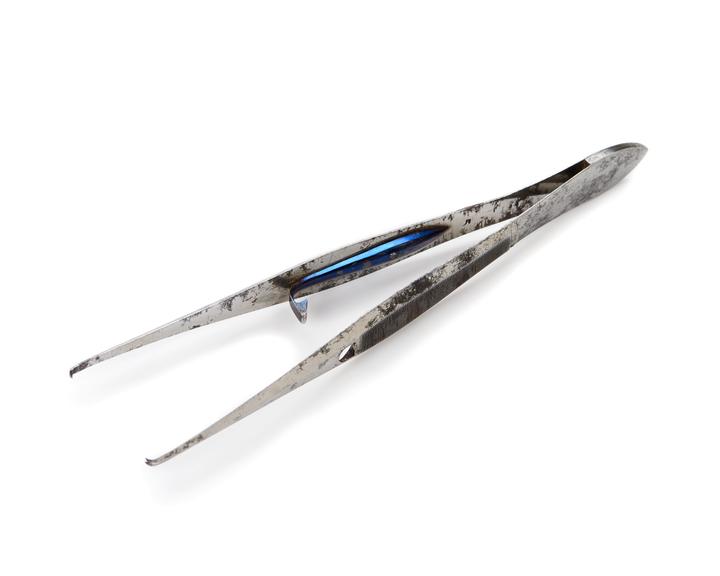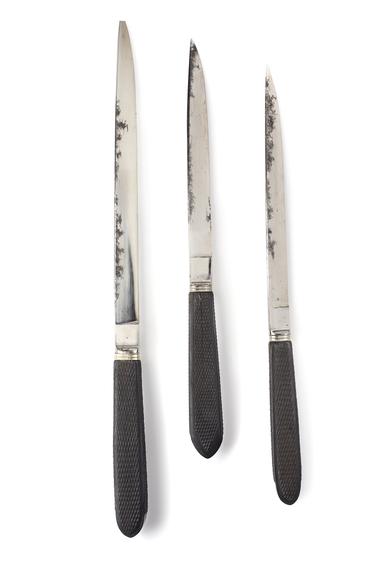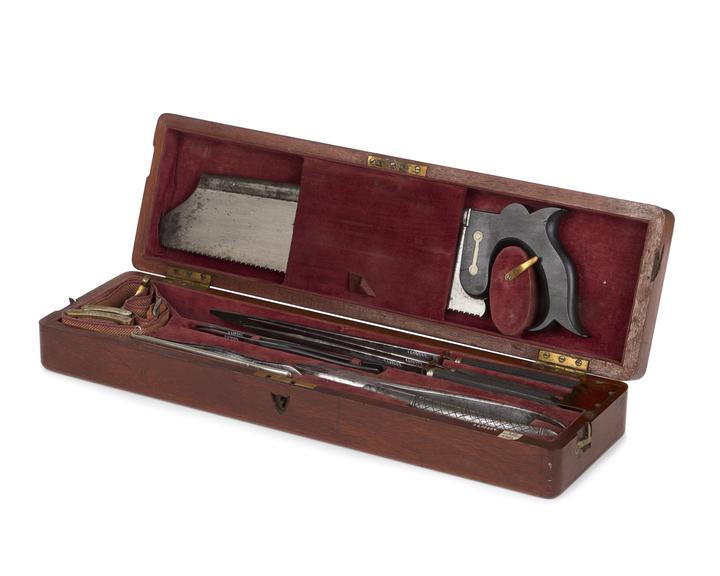Amputation saw
Amputation saw with wooden handle
More
Amputation saws are used to cut through bones of the arms or legs. As this example has wooden handles, they could not be easily sterilised between uses. It is likely that this pre-date ideas of aseptic surgery - to prevent infection during operations.
- Object Number:
- A600559 Pt1
- type:
- amputation saws
- Image ©
- The Board of Trustees of the Science Museum



























